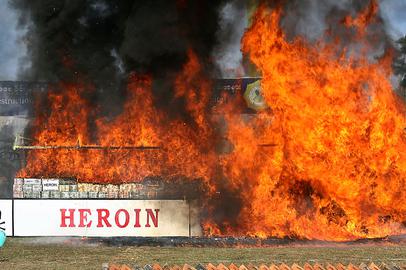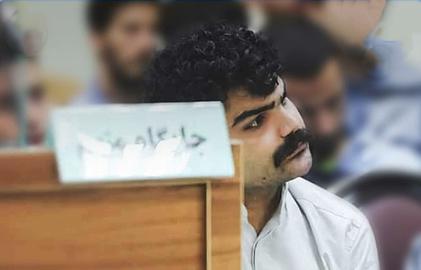
Drugs are mood elating and financially depressing. This is not just the case for the consumer and his or her immediate family, but the whole of society that incurs the costs. For every gram of a drug used, opioid or psychedelic, it is every Iranian and the national economy that pays for the escaping pleasure. In other words, every Iranian has to forgo education, health care, security and better government services so that someone can get high for a few minutes.
Of course, Iran is not an exception and drugs damage economies everywhere in the world. Speaking at Davos in 2012, head of Russia's Federal Drug Control Serivce, Viktor Ivanov said, 'Annual financial damage to the world economy from drug money equals $2 trillion. For Russia, he said, the damage, i.e. direct and indirect costs amount to $450, equal to 3% of the country's GDP.
Damages from smuggling and money laundering combine with loss of investment in human resources and costly care and harm reduction services, all coming out of taxpayers' pockets. The drugs economy can flow in the opposite direction of the current of the national economy and take on a life of its own. A rise in unemployment and inflation can increase the supply of labor and substantially reduce trafficking and handling costs. Illicit drugs are labor intensive and the biggest share in the end price is for wages. Subsequently, as supply increases because of the above, the market becomes too competitive, profit margins grow slim and retail price can even decrease in spite of overall inflation in the economy.
An Iranian blogger and journalist recently asked in an article why the retail price of drugs has experienced little change, while those of other goods, especially staples, have been skyrocketing. To Amir Hadi Anvari, it is odd that since 2004 until now the price of goods and services have increased manyfold, the food index has grown six-fold and health care has jumped by more than 350 percent, while the price of psychedelic crystal has only doubled and heroin crack has remained unchanged. Even smugglers and dealers need to make the ends meet. Anvari asks, 'Do smugglers not live in Iran and suffer from the same inflation that others do? Do they not need refill tanks of their cars with petrol, price of which has grown ten fold? Have their wages not changed? Have prices of utilities not changed for them, even after government's liberalization of prices and cutting of subsidies?'
Meanwhile, costs that families, society and the economy incur have experienced draconian increase: from officer salaries at the narcotics department of the Police and costs of rehabilitation centers to the loss of potential tax payers and educated labor force. In January, the Iranian Minister of Interior, Mohammad Mostafa Najar, announced the country spends more than $700 million annually to physically block its eastern borders with Pakistan and Afghanistan. He also said that the country has lost 3700 men in action. 12000 more were severely wounded. It's an all-out war. An expensive one.
Many see addiction arising from ignorance and illiteracy, but a recent study in Iran showed that only 7 percent of addicts are illiterate, while 37 percent have university education. The average age of addiction has dropped to 21 and more than half of addicts are between the ages of 20 and 30. Iranian authorities disagree on the number of addicts. A former official of Anti-narcotics Headquarters believes there are more than 3.6 million addicts, a sizeable population, almost 5 percent of the total population. More than 1.8 million of them are in what we would like to describe as their prime years. How many of them have university degrees?
The Deputy of Anti-Narcotics Headquarters recently gave some depressing figures:
- An average number of 30 drug dealers and addicts are arrested every hour,
- 20 000 drug-related cases opened by the Police every month, 27 every hour,
- Seizure of more than 50 000 Kg of drugs in the last Iranian year (21 March 2012 - 20 March 2013), 57 kg every hour.
- 11 addicts die of side-effects every day.
It is very difficult to estimate the total cost and damage of drugs and addiction on the country's economy. The most recent report available to the public quotes figures from a national research from 2004. In that year, it is estimated that the total cost and damage of use of drugs, directly or indirectly, that consumers, the society and the government sustained, was $11.7.
With today's prices, the magnitude of the cost would only boggle the mind.
visit the accountability section
In this section of Iran Wire, you can contact the officials and launch your campaign for various problems

























comments